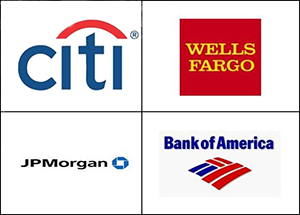Courtesy of Pam Martens.
 Monday was settlement day on Wall Street. The four largest Wall Street banks and a handful of smaller ones tossed $20 billion at their various regulators and slid home free without going to jail over egregious foreclosure abuses that have ravaged the nation and left millions of families in desperate straits.
Monday was settlement day on Wall Street. The four largest Wall Street banks and a handful of smaller ones tossed $20 billion at their various regulators and slid home free without going to jail over egregious foreclosure abuses that have ravaged the nation and left millions of families in desperate straits.
News of big settlements with Wall Street are typically dumped on Friday to ensure the news is old hat by Monday morning. But these two big settlements, totaling over $20 billion, came at the beginning of the news week, adding the curiosity element as to why Wall Street actually wanted to create buzz around the settlements. It didn’t take long to figure that out: the buzz was to help prop up bank shares on the premise that the worst of the past misdeeds are now behind the banks. The regulators eagerly boarded this public relations train by releasing the barest of details on the settlements.
In the first settlement, ten U.S. banks including the four largest U.S. banks — JPMorgan Chase, Citigroup, Bank of America and Wells Fargo – agreed to pay $8.5 billion to shut down a review of individual foreclosure case files in a process established by the Office of the Comptroller of the Currency (OCC) and the Federal Reserve in 2011. As we reported last week, that program was hopelessly compromised from the start by its structure. So-called “independent” reviewers were paid directly by the banks and had to rely on the banks for much of their information, rather than being able to speak directly to the abused foreclosure victims.
The OCC said in a statement that the $8.5 billion “includes $3.3 billion in direct payments to eligible borrowers and $5.2 billion in other assistance, such as loan modifications and forgiveness of deficiency judgments.”
Neither the OCC nor the Federal Reserve released any of the following details: how much did each bank pay individually (as a means for the public to determine where the worst infractions were committed); what were the specific findings of the so-called independent foreclosure reviews (so that the public can be on the lookout for the same attempted abuses in the future); what safeguards have been put in place to prevent these abuses from reoccurring. In a call to the OCC I learned that it planned to release some of the above details, but not for weeks.
The OCC also said in its statement that 3.8 million impacted borrowers “are expected to receive compensation ranging from hundreds of dollars up to $125,000, depending on the type of possible servicer error.” Error? The OCC and Federal Reserve established the program as an enforcement action due to findings of fraud and abuse in the foreclosure process, including tens of thousands of forged signatures (robo-signers) on foreclosure documents brazenly submitted to courts of law. Now the bank regulator is calling this abuse an “error”?
…



